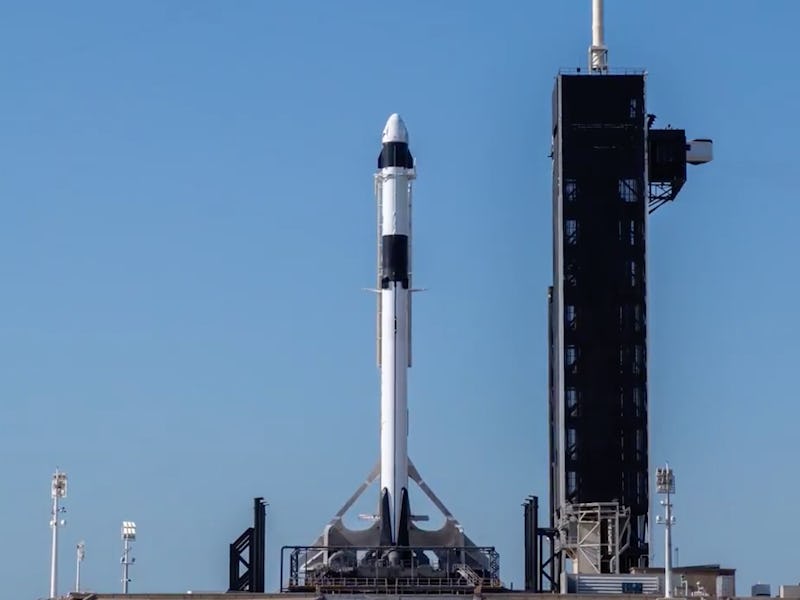SpaceX Crew Dragon: watch the Falcon 9 rise up in impressive video
SpaceX's human-carrying capsule looks set to fly humans for the first time, and a new video shows the rocket getting ready.

The Crew Dragon, SpaceX's human-carrying capsule, is about to send humans into space for the first time. On Friday, the company shared video footage of the capsule lifting up at the launch pad on top of a Falcon 9 rocket.
The 15-second video is a quick preview, but demonstrates the rocket getting ready for the May 27 launch. Lift-off is scheduled for 4:33 p.m. Eastern time, taking off from Launch Complex 39A at the Kennedy Space Center in Florida. The new video comes one day after SpaceX shared an image of the Crew Dragon and rocket, getting ready in the nearby hangar.
The mission is a big moment for both SpaceX and NASA, which is partnering with the firm and Boeing through the Commercial Crew program. The pair have been tasked with developing a capsule capable of carrying humans into space, as part of a plan to start sending NASA astronauts into space from the United States again.
Ever since NASA ended the shuttle program in 2011, the agency has been ferrying astronauts to and from the International Space Station by sending them to Baikonur Cosmodrome in Kazakhstan. NASA has been renting seats on Soyuz rockets from Russian agency Roscosmos, at a cost of around $80 million per seat. As well as acting as an important step in the history of commercial spaceflight, SpaceX's new capsule will also end this long-winded method of sending humans into space.
The capsule, prepared at Launch Complex 39A, marks a step toward this goal.
The capsule was mounted onto a Falcon 9 with the rocket sat horizontally, as it has done for previous non-human missions. SpaceX could soon add a new method to its repertoire, as in February 2020 it outlined plans to build a giant Mobile Service Tower at Launch Complex 39A. The tower would enable SpaceX to mount satellites to rockets in a vertical position. The planned construction measures 284 feet tall, 118 feet wide, 108 feet deep, and come with 11 floors. It would use four transport wheels to move 130 feet.
SpaceX's rapidly-rising rocket captured above seems pretty cool, so why the change? Because practically every other space organization, bar SpaceX and a smattering of Russian operators, mount payloads onto rockets in a vertical position. The new tower would enable the firm to take on contracts from the likes of the United States Air Force, without the client needing to adapt the satellite to suit SpaceX's alternative mounting methods.
With the rocket now in place, all that's left is to send the astronauts out to the capsule. Bob Behnken and Doug Hurley will be flying on the "Demo-2" mission, staying at the International Space Station for an as-yet-undetermined length of time. Once they complete the mission, they'll return by splashing down in the capsule in the Atlantic Ocean.
The Inverse analysis – SpaceX's Mobile Service Tower has yet to debut, meaning it's still using this technique for all its missions. But once the tower enters operation, it could start an era of increased activity at the base. Space.com reports the company is aiming to launch 70 missions per year by 2023 at the Kennedy Space Center and Cape Canaveral, up from the 11 missions it launched in 2019. The firm is expected to reach this figure through supporting missions for NASA and the Department of Defense.
While SpaceX's work with NASA on the Crew Dragon will help boost that number, that's only part of the story in their relationship. SpaceX is also expected to use a new Dragon XL capsule to support lunar missions as part of the Artemis program. Space-related activity around Florida could be about to look a whole lot busier.